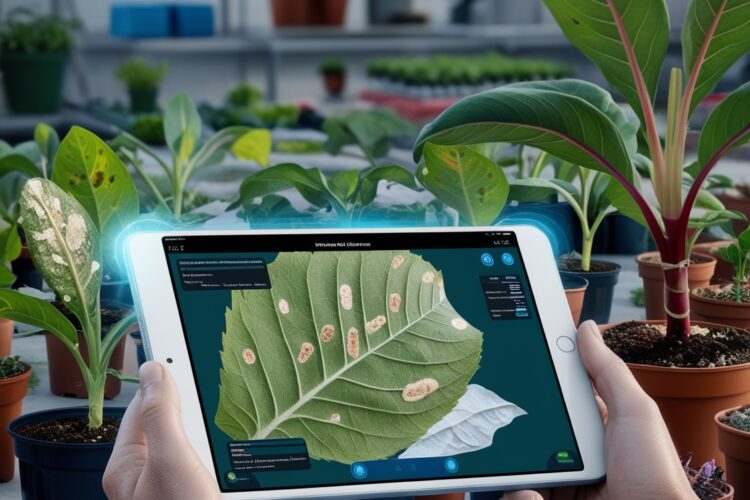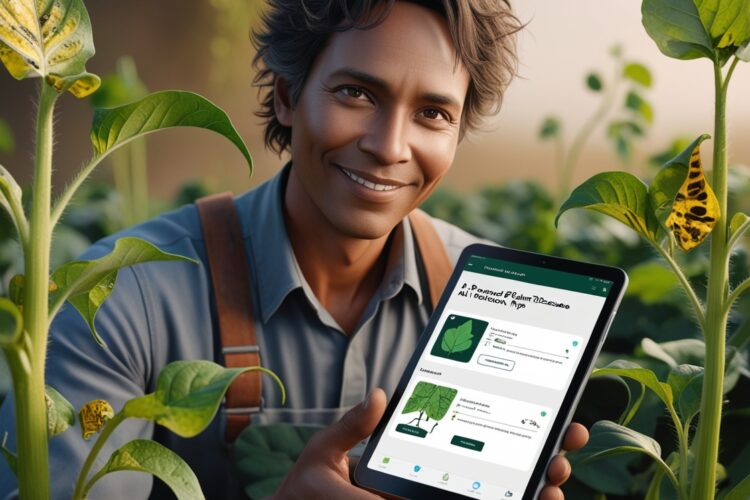The Future of Farming: AI-Powered Plant Disease Detection
The Future of Farming: AI-Powered Plant Disease Detection
In recent years, artificial intelligence (AI) has revolutionized various industries, and agriculture is no exception. Among its many applications in farming, AI-powered plant disease detection stands out as a game-changer. By leveraging advanced machine learning algorithms, image recognition, and data analytics, AI is helping farmers identify and mitigate crop diseases faster and more accurately than ever before.
Why AI in Plant Disease Detection?
Global food security is threatened by plant diseases. Traditional methods of disease detection often rely on manual inspection, which is time-consuming, labor-intensive, and prone to human error. With AI-driven solutions, farmers can diagnose plant diseases early, preventing outbreaks that could devastate crops and reduce yield. Early detection leads to better disease management, reduced losses, and improved crop health, ensuring a more sustainable and efficient farming process.
How AI Detects Plant Diseases
AI-powered plant disease detection works through a combination of:
- Image Recognition: High-resolution cameras capture images of plants, and AI models analyze these images to detect signs of disease, nutrient deficiencies, or pest infestations.
- Machine Learning Algorithms: AI is trained using vast datasets of healthy and diseased plant images, enabling it to recognize symptoms with high accuracy.
- IoT and Drones: Integrated with drones and IoT devices, AI can scan large fields in real-time, providing farmers with instant insights into plant health.
- Predictive Analytics: AI models use historical data and weather patterns to predict disease outbreaks, allowing farmers to take preventive measures.
- Automated Decision Support: AI provides actionable insights and recommendations to farmers, enabling them to take timely corrective measures and optimize yield.
Applications of AI in Precision Agriculture
The use of AI in agriculture extends beyond disease detection. AI-driven technologies are also being utilized in:
- Soil and Nutrient Analysis: AI can analyze soil composition and provide recommendations for optimal fertilization and crop rotation.
- Weed Detection and Management: AI helps identify weeds and assists in targeted herbicide application, reducing chemical use and protecting the environment.
- Yield Prediction: AI models analyze past data and current conditions to forecast crop yields, aiding in better planning and supply chain management.
- Climate Adaptation: AI-driven solutions help farmers adapt to climate change by analyzing environmental factors and suggesting appropriate mitigation strategies.
Benefits of AI in Agriculture
The adoption of AI in plant disease detection offers numerous benefits, including:
- Early Disease Detection: AI can detect diseases in their early stages, allowing farmers to intervene before significant damage occurs.
- Reduced Chemical Use: With precise disease identification, farmers can apply targeted treatments instead of widespread pesticide use.
- Increased Yield and Profitability: Healthier crops lead to higher yields, benefiting both farmers and consumers.
- Sustainability: AI-driven precision farming reduces waste and promotes environmentally friendly agricultural practices.
- Cost Savings: AI reduces labor costs by automating monitoring and analysis, leading to significant financial benefits for farmers.
Outline Media Solutions and AI-Powered Plant Disease Detection
Outline Media Solutions provides cutting-edge AI-powered plant disease detection services, helping farmers and agribusinesses monitor crop health with precision. Our advanced image labeling technology, combined with machine learning algorithms, enables rapid identification of plant diseases, ensuring early intervention and reduced crop loss. With our expertise in AI and data annotation, we deliver high-quality solutions that support sustainable farming practices and enhance agricultural productivity.
The Future of AI in Agriculture
AI’s role in agriculture will only grow as it evolves. Future advancements may include more sophisticated disease detection models, AI-powered robotic farming assistants, and deeper integration with smart farming systems. With AI, farmers can ensure food security while adopting sustainable practices that benefit both people and the planet.
Potential future developments include:
- AI-Powered Autonomous Farming: Robotic systems that automate planting, harvesting, and disease management.
- Enhanced Crop Genome Analysis: AI-driven genetic studies to develop disease-resistant crops.
- Advanced Climate Models: AI tools that help predict climate changes and their impact on agriculture.
- Blockchain Integration: Secure, AI-enhanced tracking of agricultural products from farm to market.
Conclusion
AI-powered plant disease detection is transforming modern farming, offering faster, more accurate, and cost-effective solutions to disease management. Companies across the globe are investing in this technology, helping farmers optimize productivity and reduce losses. As we move toward a future of smarter agriculture, AI will remain a crucial tool in protecting crops and ensuring a stable food supply for generations to come.
With the growing demand for sustainable farming solutions, AI is poised to play a critical role in revolutionizing agriculture. As farmers continue to embrace AI-driven innovations, the industry will witness increased efficiency, higher yields, and a more resilient global food system.



